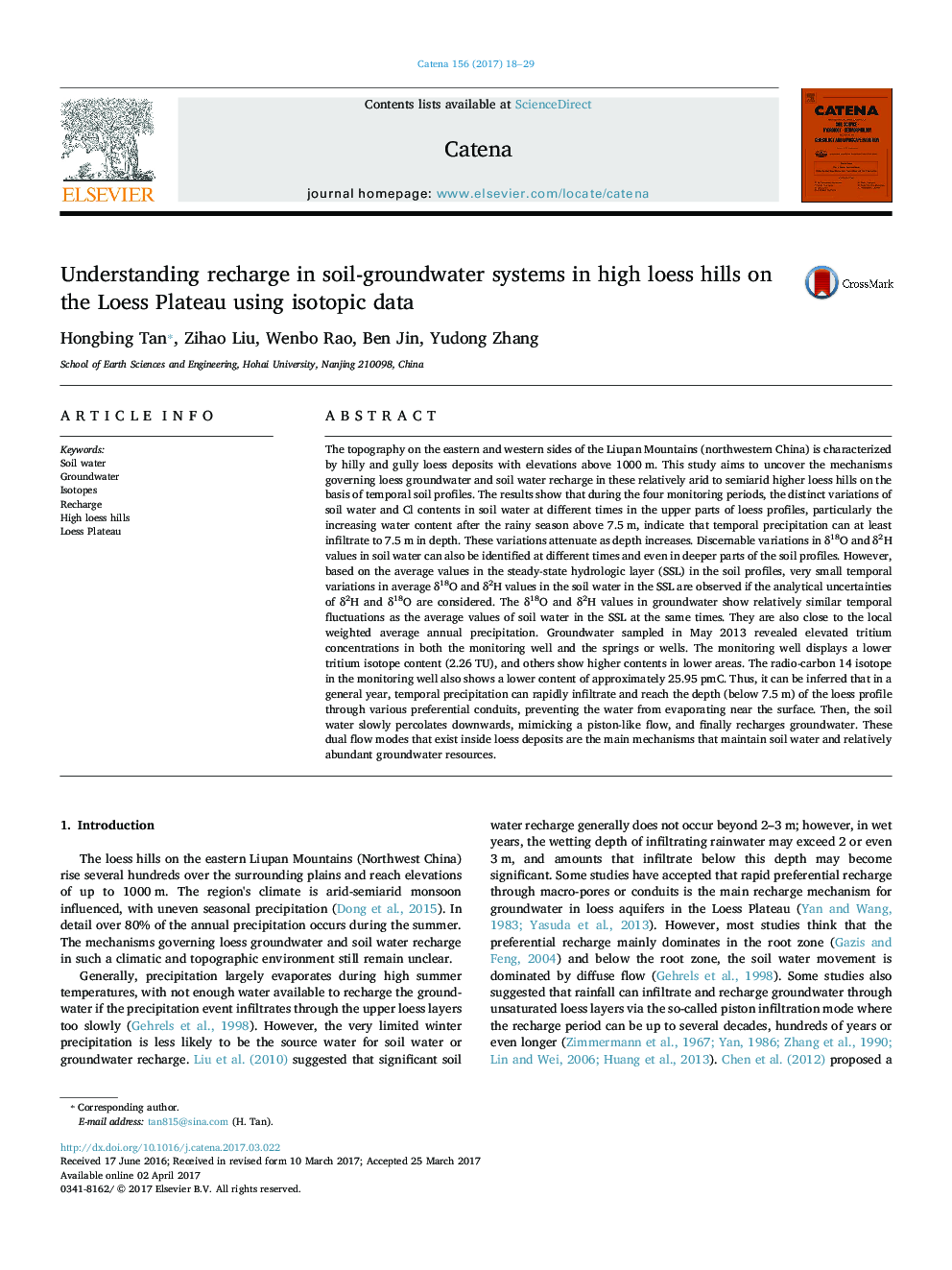| کد مقاله | کد نشریه | سال انتشار | مقاله انگلیسی | نسخه تمام متن |
|---|---|---|---|---|
| 5769978 | 1629198 | 2017 | 12 صفحه PDF | دانلود رایگان |
- Stable and radio-active isotopes were used.
- Mechanisms governing loess groundwater and soil water recharge were discussed.
- Local seasonal precipitation is main recharge source of groundwater recharge.
- Dual flow modes maintain soil water and groundwater resources.
The topography on the eastern and western sides of the Liupan Mountains (northwestern China) is characterized by hilly and gully loess deposits with elevations above 1000 m. This study aims to uncover the mechanisms governing loess groundwater and soil water recharge in these relatively arid to semiarid higher loess hills on the basis of temporal soil profiles. The results show that during the four monitoring periods, the distinct variations of soil water and Cl contents in soil water at different times in the upper parts of loess profiles, particularly the increasing water content after the rainy season above 7.5 m, indicate that temporal precipitation can at least infiltrate to 7.5 m in depth. These variations attenuate as depth increases. Discernable variations in δ18O and δ2H values in soil water can also be identified at different times and even in deeper parts of the soil profiles. However, based on the average values in the steady-state hydrologic layer (SSL) in the soil profiles, very small temporal variations in average δ18O and δ2H values in the soil water in the SSL are observed if the analytical uncertainties of δ2H and δ18O are considered. The δ18O and δ2H values in groundwater show relatively similar temporal fluctuations as the average values of soil water in the SSL at the same times. They are also close to the local weighted average annual precipitation. Groundwater sampled in May 2013 revealed elevated tritium concentrations in both the monitoring well and the springs or wells. The monitoring well displays a lower tritium isotope content (2.26 TU), and others show higher contents in lower areas. The radio-carbon 14 isotope in the monitoring well also shows a lower content of approximately 25.95 pmC. Thus, it can be inferred that in a general year, temporal precipitation can rapidly infiltrate and reach the depth (below 7.5 m) of the loess profile through various preferential conduits, preventing the water from evaporating near the surface. Then, the soil water slowly percolates downwards, mimicking a piston-like flow, and finally recharges groundwater. These dual flow modes that exist inside loess deposits are the main mechanisms that maintain soil water and relatively abundant groundwater resources.
Journal: CATENA - Volume 156, September 2017, Pages 18-29
